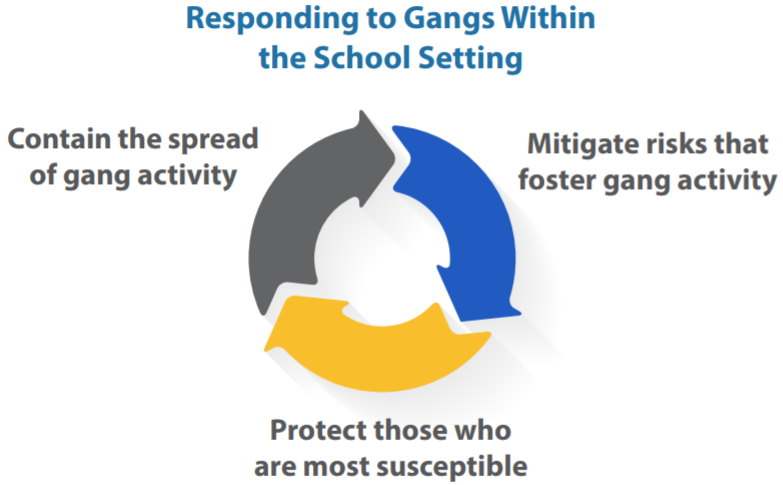
How Schools Can Prevent And Intervene In The Battle To Curb Youth Violence
By a Biometrica staffer
In the first part of our mini series on youth gangs and violence, we established that there have been repeated reports suggesting spikes in violent crime even among the youth. Just over two weeks after we published that piece, a 15-year-old sophomore opened fire on his fellow students at Oxford High School in Michigan, killing four and injuring seven others. A lawsuit was filed seeking $100 million in damages against the school district and its officials claiming that the violence was “entirely preventable.” The Michigan shooting has, once again, brought to the fore the challenge of combating youth-on-youth violence and school shootings.
Youth violence is not an issue that can be solved with just the participation and involvement of law enforcement; ditto schools, or even parents and families. It’s a crisis that requires the coming together of various sections of the community for a comprehensive, and more effective, approach. In the second part of this mini series, we examined certain general characteristics of gang-related violence at school, and listed out certain identifiers that schools could watch out for.
In this piece, we delve deeper into how schools can play a role in preventing violence on campus, and what they could do if they do come across such incidents. As with the previous piece, the information is based on reports by the Office of Juvenile Justice and Delinquency Prevention (OJJDP) and the National Gang Center.
The OJJDP Comprehensive Gang Model
To recap from our previous pieces, the OJJDP’s anti-gang violence portfolio combines prevention, intervention, and suppression programs to help identify and address the root causes of youth gang activity within affected communities. Those programs are based on the core components of the OJJDP Comprehensive Gang Model. The model lists five integrated strategies that are designed to offer a comprehensive, collaborative approach to prevent and reduce gang violence.
When it comes to schools, the OJJDP recommends three key proactive strategies: prevention, intervention and suppression. It’s these that we will now explore further.

Prevention strategies:
As with other crimes, the most important strategy to adopt when it comes to youth violence at schools must be steps to prevent such incidents from occurring altogether. Per the OJJDP-National Gang Center report, here are some prevention practices that schools can follow:
- Consult with local law enforcement to bring in subject matter experts to provide ongoing gang awareness and education for teachers, school personnel, and parents and guardians. As with any training, this should be periodically reviewed, updated and reinforced
- Provide opportunities to develop relationships between law enforcement officers and students as early as possible, preferably in elementary schools. Bonding and positive relationships with law enforcement officers can influence student choices in the future
- Implement the evidence-based Gang Resistance Education And Training (G.R.E.A.T.) Program, taught by law enforcement officers in the communities and schools they serve, for fourth through seventh grades
- Refer parents to the Parents’ Guide to Gangs brochure found on the National Gang Center Website. It provides tips on what to look for and how to respond
- Utilize mentors who are experienced in working with this population as an added support for students who are at risk of joining gangs
- Provide alternative activities and after-school programing; include law enforcement programs such as the Police Athletic League (PAL)
- Develop a safe-passage-to-school program for students who have to traverse rival gang territories to get to school
- Develop community partnerships to support prevention activities
Intervention strategies:
Despite best efforts from everyone involved, a few students may exhibit some level of engagement in gang-related activities. What kind of gang “disengagement” strategies can schools adopt then to help these students (and to keep others from potential harm)?
- Per the report, the school can convene a team of administrators, teachers, school-based counselors, mental health specialists, resource officers, outside law enforcement, vetted gang intervention specialists, and representatives from agencies that have responsibilities for gang involved youth (for instance, probation and parole). Everyone has a different perspective and can contribute his or her own professional expertise. The team can focus on the most difficult gang-involved students by collectively monitoring their behaviors and by providing case management, referral to services in and out of the school environment, and constant follow-up
- Have a plan for confronting/addressing students involved in gang-related activities. The report reminds schools to always consider the safety of its students and staff while drawing up this plan
- Get to know those students who are suspected of gang involvement. Determine each student’s level of involvement and commitment as a member or associate (For example, is the student deep in the gang, or does the student have a loose affiliation with gang members?). This will assist in determining the best individual approach to use. When it comes to such students, the report also recommends that schools track and document their behaviors and progress at school; address concerns of behavior, grades, and attendance; and utilize existing school supports for academic and behavioral issues. It also recommends that schools involve these students’ parents/guardians early and consistently; and be proactive with parents, and allow them to be a part of the solution instead of the problem
- Establish a rapport with these students; sometimes this is as simple as providing intervention techniques such as mentoring, academic support, and a system of wraparound support services to help students disengage from gang involvement. Sometimes, it may require justice system intervention
- Be consistent with discipline; hold youth accountable for infractions. Balance consistent discipline and accountability with positive support
- Use conflict-resolution strategies and other restorative justice practices demonstrated to be effective with gang-involved youth
Suppression strategies:
These are basically strategies that focus on proactive measures to mitigate many of the factors that can contribute to disruptive gang-related behaviors that can pose a threat to the learning environment and the safety and well-being of others. Per the report, they could include:
- Review district policy and ensure that there is sound policy specific to addressing gang-related incidents
- Ensure that law enforcement is notified and aware once a student is identified as gang-involved (as a member or associate)
- Document and follow up on gang-related incidents
- All school personnel should be consistent with all students in enforcing discipline and consequences for school infractions
- Use random safety checks by police and school administration to prevent drugs and weapons from getting into campus
- Practice site security drills to include lockdown procedures
- Document graffiti, notify law enforcement, and remove immediately. Graffiti tells a story, which can help law enforcement determine whether a threat or incident is about to occur
- Confiscate gang paraphernalia, and address the matter with students and parents
In the next part of this mini series on youth violence, Biometrica will explore what parents can do to help.